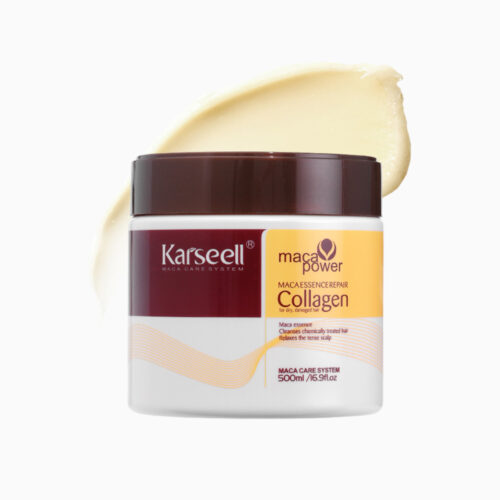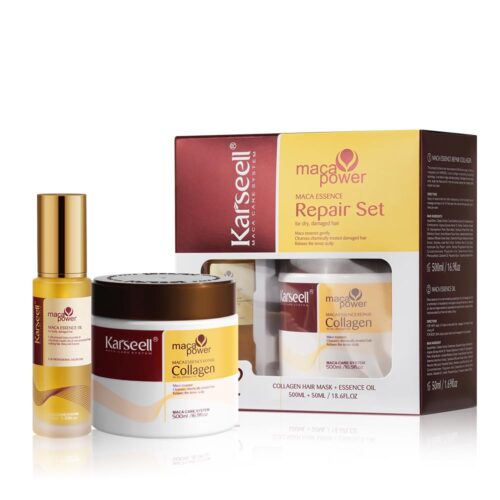Wondering if it’s okay to use a hair mask on both your hair and scalp? Dive into this article to discover the truth, with a special look at the Karseell hair mask. Uncover the dos and don’ts for optimal hair care.
When it comes to hair care, the use of hair masks has become a popular practice for many individuals seeking to nourish and revitalize their tresses. However, a common question that often arises is whether hair masks can be used on both the hair and the scalp. In this article, we will explore this topic in detail, with a particular focus on the Karseell hair mask, a well – known product in the hair care market.
Understanding the Function of Hair Masks
Hair masks are formulated to provide intense conditioning and treatment to the hair. They typically contain a concentrated blend of nutrients, such as vitamins, minerals, proteins, and natural oils. These ingredients work together to penetrate the hair shaft, repair damaged hair, add moisture, and enhance shine. The primary function of a hair mask is to target the mid – lengths and ends of the hair, which are usually the most exposed to environmental stressors, heat styling, and chemical treatments. As a result, these areas tend to be drier and more damaged compared to the hair closer to the scalp.
The Scalp: A Different Story
The scalp is the foundation of hair growth. It has its own unique characteristics and requirements. The scalp produces sebum, an oily substance that helps to keep the hair and scalp moisturized. However, an overproduction or underproduction of sebum can lead to various scalp issues, such as oily hair, dry scalp, dandruff, or itching. When considering using a hair mask on the scalp, it’s important to take into account the condition of your scalp.
-

Karseell Collagen Hair Treatment
Rated 4.99 out of 5$16.99 – $25.99Select options This product has multiple variants. The options may be chosen on the product page -

-

Karseell Purple Hair Mask
Rated 4.97 out of 5$29.99Select options This product has multiple variants. The options may be chosen on the product page -

Moroccan Argan Oil for Hair Healing
Rated 4.99 out of 5$16.99Select options This product has multiple variants. The options may be chosen on the product page
Karseell Hair Mask: Ingredients and Suitability
The Karseell hair mask is known for its high – quality ingredients. It often contains natural elements like argan oil, shea butter, and collagen. Argan oil is rich in fatty acids and vitamin E, which are great for moisturizing and protecting the hair. Shea butter provides deep hydration, and collagen helps to strengthen the hair fibers.
For those with a normal or dry scalp, using the Karseell hair mask sparingly on the scalp can be beneficial. The hydrating ingredients can help to soothe a dry and itchy scalp, providing much – needed moisture. However, if you have an oily scalp, applying the hair mask directly to the scalp may not be a good idea. The mask’s rich formula could potentially add more oil to an already oily scalp, leading to a greasy appearance and possible clogging of the hair follicles.
Guidelines for Using Hair Masks on the Scalp

- Scalp Condition Assessment: Before applying any hair mask, including the Karseell one, assess the condition of your scalp. If you have a dry scalp, you may be able to apply a small amount of the mask to the scalp. Massage it gently into the scalp for a few minutes before spreading the remaining product on the hair.
- Frequency: Even if your scalp can tolerate it, limit the frequency of applying the hair mask to the scalp. Once every 2 – 3 weeks is usually sufficient. Over – application can disrupt the natural balance of the scalp.
- Rinsing Thoroughly: When using the hair mask on the scalp, make sure to rinse it out thoroughly. Any residue left on the scalp can cause build – up and potentially lead to scalp problems.
Potential Benefits and Risks
Benefits:
- For dry scalps, a hair mask like Karseell’s can provide relief from dryness and itching. The moisturizing ingredients can help to improve the overall health of the scalp, which in turn can promote better hair growth.
- When used correctly, the nutrients in the hair mask can reach the hair follicles on the scalp, strengthening the hair from its root.
Risks:
- As mentioned earlier, for oily scalps, applying a hair mask can exacerbate the oiliness. This can lead to a greasy look and feel, and may also contribute to hair loss in extreme cases due to clogged follicles.
- If the hair mask contains ingredients that you are allergic to, applying it to the scalp can cause an allergic reaction, resulting in redness, itching, and inflammation.
In conclusion, while it is possible to use a hair mask like the Karseell hair mask on both the hair and the scalp in some cases, it is crucial to consider your scalp type and condition. Understanding the ingredients of the hair mask and following the proper guidelines for application can help you make the most of this hair care product without causing any harm to your hair or scalp.









